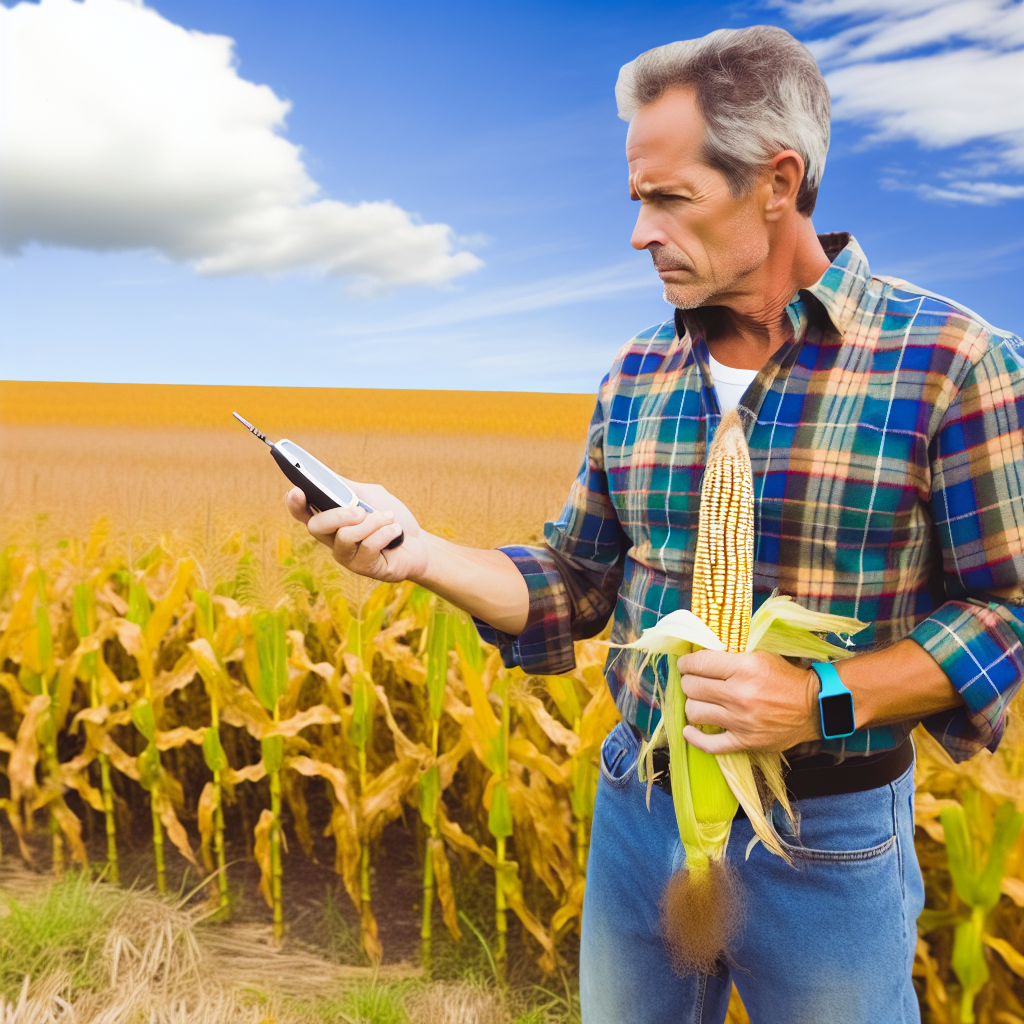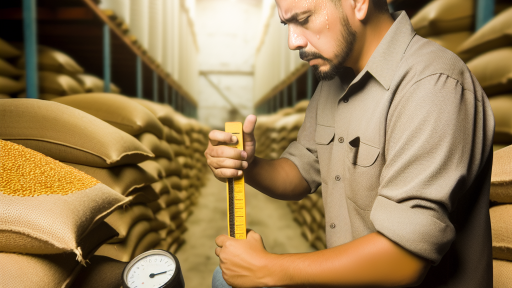Introduction to Disease Forecasting in Agriculture
Disease forecasting plays a crucial role in modern agriculture.
This innovative practice helps farmers predict potential outbreaks of crop diseases.
By analyzing environmental factors, disease patterns emerge with greater clarity.
Farmers can employ accurate forecasting to make informed decisions.
Consequently, they can protect their crops and maximize yields.
Understanding Disease Prediction Models
Various models exist for disease forecasting in agriculture.
These models utilize historical data and current conditions.
For instance, weather patterns significantly influence disease development.
Additionally, specific crop types respond differently to environmental triggers.
Thus, tailoring the prediction model to specific crops enhances accuracy.
The Role of Technology in Forecasting
Advancements in technology have transformed disease forecasting.
Farmers now use satellite imagery and drones for real-time data collection.
Moreover, mobile applications provide instant updates on disease threats.
This timely information empowers farmers to act swiftly.
Furthermore, data analytics tools help interpret complex data sets.
Transform Your Agribusiness
Unlock your farm's potential with expert advice tailored to your needs. Get actionable steps that drive real results.
Get StartedBenefits of Disease Forecasting for Farmers
Accurate disease forecasting leads to several advantages for farmers.
Firstly, it reduces the reliance on pesticides and fungicides.
Farmers can treat crops only when necessary, lowering costs.
This practice benefits the environment by minimizing chemical use.
Secondly, farmers improve crop management and resource allocation.
By anticipating problems, they can adjust their strategies accordingly.
Enhancing Crop Resilience
Implementing disease forecasting strengthens crop resilience.
Farmers can develop preventative measures tailored to specific diseases.
This proactive approach limits damage and enhances productivity.
Additionally, it encourages the adoption of sustainable farming practices.
Ultimately, healthy crops lead to better food security in communities.
Understanding the Impact of Diseases on Crop Yields
Overview of Crop Diseases
Crop diseases can devastate agricultural yields each year.
These diseases may arise from fungi, bacteria, or viruses.
Understanding their origin helps farmers take preventive measures.
Direct Effects on Yield
Diseases directly reduce the quantity of harvestable crops.
Crops affected by diseases often produce smaller, lower-quality yields.
Consequently, this leads to financial losses for farmers.
Economic Impact on Farmers
Crop diseases create significant economic burdens on farming operations.
Farmers incur costs related to disease management and treatment.
This can strain resources and affect farm sustainability.
Market Implications
When disease outbreaks occur, market supply fluctuates sharply.
Reduced supply leads to increased prices for consumers.
Conversely, farmers may face lower prices due to oversupply in unaffected areas.
Long-Term Consequences
Persistent disease issues can lead to soil degradation over time.
Showcase Your Farming Business
Publish your professional farming services profile on our blog for a one-time fee of $200 and reach a dedicated audience of farmers and agribusiness owners.
Publish Your ProfileFarmers may need to resort to more harmful agricultural practices.
This can create a cycle of dependency on chemical treatments.
The Importance of Accurate Forecasting
Accurate disease forecasting helps mitigate crop yield loss.
Forecasting enables farmers to respond proactively to threats.
With early detection, farmers can implement targeted interventions.
Cost Savings Through Early Detection and Prevention
Reducing Losses from Disease
Accurate disease forecasting helps farmers reduce potential losses significantly.
Identifying disease before it spreads allows for timely intervention.
Farmers can implement measures that minimize crop damage.
As a result, they maintain higher yields and better quality produce.
Optimizing Resource Use
Effective forecasting allows for better allocation of resources.
Farmers can apply fertilizers and pesticides more strategically.
This minimizes waste and maximizes the effectiveness of treatments.
Consequently, overall input costs decrease.
Enhancing Financial Stability
By preventing disease outbreaks, farmers stabilize their incomes.
Fewer crop losses translate into higher market supply.
Stable supply helps maintain price levels, benefitting farmers.
Moreover, financial predictability fosters investment in future growth.
Improving Market Competitiveness
Farmers using accurate forecasting can outperform competitors.
Consistent quality and quantity attract more lucrative contracts.
Additionally, a reliable supply chain builds customer loyalty.
Farmers positioned as dependable suppliers gain a competitive edge.
Fostering Sustainable Practices
Accurate disease forecasting encourages more sustainable farming practices.
By reducing unnecessary chemical use, it promotes healthier ecosystems.
Sustainable practices can lead to long-term cost savings and land health.
As a result, farmers contribute to environmental conservation.
Discover More: Hydroponics Systems Explained
Enhancing Crop Management Strategies with Accurate Forecasts
Understanding Disease Forecasting
Disease forecasting involves predicting the occurrence of plant diseases.
Farmers use these predictions to protect their crops effectively.
Accurate forecasts can lead to proactive disease management strategies.
This approach minimizes reliance on reactive treatments.
Improving Resource Allocation
With precise disease forecasts, farmers can allocate resources efficiently.
This includes time, labor, and financial investments.
As a result, farmers can optimize their input costs.
Efficient resource allocation boosts overall farm productivity.
Reducing Chemical Usage
Accurate forecasts enable farmers to minimize chemical applications.
This reduction benefits both the environment and farm sustainability.
Farmers can apply chemicals only when necessary.
This practice leads to healthier soil and ecosystems.
Enhancing Crop Yields
Accurate disease forecasts significantly enhance crop yields.
Farmers can take timely action to prevent disease outbreaks.
Showcase Your Farming Business
Publish your professional farming services profile on our blog for a one-time fee of $200 and reach a dedicated audience of farmers and agribusiness owners.
Publish Your ProfileAs a result, healthier plants are more productive.
Higher yields improve farm profitability.
Strengthening Decision-Making Capabilities
Data-driven forecasting strengthens farmers’ decision-making processes.
Farmers make informed choices about planting and harvesting.
Additionally, they can choose appropriate pest management strategies.
Accurate information leads to better overall farm management.
Fostering Community Collaboration
Disease forecasting encourages collaboration among farmers.
Sharing forecast data helps the entire farming community.
This collective approach enhances overall agricultural resilience.
Furthermore, it fosters a culture of support and resource sharing.
You Might Also Like: Precision Agriculture Techniques For Disease Forecasting
Improving Resource Allocation and Efficiency on Farms
Optimizing Input Usage
Accurate disease forecasting enables farmers to optimize their input usage.
They can apply fertilizers and pesticides only when necessary.
This targeted approach reduces waste and saves costs.
As a result, farmers can achieve higher yields and better profit margins.
Enhancing Crop Management Strategies
Effective forecasting aids in developing informed crop management strategies.
Farmers can identify which crops need immediate attention.
This proactive management reduces the spread of diseases.
In turn, it leads to healthier crops and improved harvests.
Streamlining Labor Resources
Accurate predictions allow farmers to allocate labor more efficiently.
They can schedule workers precisely when needed.
This reduces labor costs and increases productivity.
Consequently, farms run smoother and meet their operational goals.
Improving Decision-Making Processes
Forecasting provides valuable insights into potential challenges.
Farmers can make better-informed decisions based on data.
This minimizes risks associated with crop failures.
Furthermore, it empowers them to seize opportunities quickly.
Facilitating Financial Planning
Accurate disease forecasting assists in financial planning for farmers.
By predicting possible losses, farmers can devise contingency plans.
This foresight ensures that they are financially prepared.
Ultimately, it leads to greater financial stability.
Building Long-Term Resilience
Effective disease forecasting builds resilience over time.
Farmers learn to adapt to changing conditions and emerging threats.
This adaptability enhances their sustainability efforts.
Thus, farms become more resilient against future challenges.
Uncover the Details: Mulching Techniques to Boost Crop Productivity

Case Studies Showcasing Successful Disease Forecasting
Agricultural Innovations at Greenfield Farms
Greenfield Farms implemented a disease forecasting model using real-time data.
This model effectively predicted outbreaks of powdery mildew.
As a result, the farm reduced chemical treatments by 30%.
This reduction saved costs and minimized environmental impact.
Showcase Your Farming Business
Publish your professional farming services profile on our blog for a one-time fee of $200 and reach a dedicated audience of farmers and agribusiness owners.
Publish Your ProfileFarmers at Greenfield could focus on healthier cultivation practices.
Success Story from Sunnyvale Orchard
Sunnyvale Orchard adopted drone technology for disease surveillance.
The drones captured aerial images to identify diseased trees.
This technology enabled early intervention against apple scab.
Consequently, the orchard reported a 25% increase in yield.
Farmers appreciated the increased efficiency in managing disease threats.
Innovative Approaches at Rivertown Produce
Rivertown Produce integrated machine learning into their forecasting system.
The system analyzed weather patterns and disease incidence data.
It successfully predicted downy mildew outbreaks with high accuracy.
This predictive capability helped farmers adjust their planting schedules.
Farmers at Rivertown experienced less crop loss and higher profits.
Collaboration with Research Institutions
Farmers collaborated with local universities for better forecasting techniques.
They developed models based on historical data and climatic changes.
This partnership enhanced understanding of several crop diseases.
Farmers benefited from personalized advice tailored to specific conditions.
This customized approach helped mitigate risks associated with crop failure.
Delve into the Subject: Training Farmers on Effective Post-Harvest Techniques
Leveraging Technology for Better Forecasting Accuracy
The Role of Data Analytics
Data analytics plays a crucial role in predicting disease outbreaks in crops.
Farmers can utilize data from various sources for improved decision-making.
This process allows for the identification of patterns related to disease spread.
Enhanced analytics capabilities lead to timely interventions.
Weather and Climate Monitoring
Weather conditions significantly affect agricultural health.
Advanced meteorological tools provide real-time weather updates.
These tools enable farmers to anticipate the likelihood of disease-related weather events.
Consequently, farmers can implement preventive measures effectively.
Remote Sensing Technologies
Remote sensing technologies allow for constant monitoring of crop conditions.
Drones equipped with cameras gather data on plant health.
This technology identifies early signs of disease before visible symptoms appear.
Farmers can therefore act swiftly to mitigate potential outbreaks.
Machine Learning Applications
Machine learning models analyze vast datasets to predict disease risk.
These models become increasingly accurate as they process more data.
Farmers benefit from predictions that are tailored to specific crop types.
This personalization enhances the effectiveness of disease management strategies.
Mobile Applications for Farmers
Various mobile applications support farmers in disease forecasting.
These applications provide alerts based on real-time data analysis.
Farmers receive guidelines on prevention and treatment for specific diseases.
This immediate access to information improves agricultural outcomes.
Community and Collaborative Platforms
Farmers can engage on platforms that share forecasting insights.
Collaborative efforts enhance knowledge sharing among farmers.
This community-driven approach fosters innovation in disease management.
Showcase Your Farming Business
Publish your professional farming services profile on our blog for a one-time fee of $200 and reach a dedicated audience of farmers and agribusiness owners.
Publish Your ProfileMoreover, collective data can improve forecasting accuracy over time.
Building Resilience Against Climate Change Through Informed Decisions
Understanding Climate Change Impacts
Climate change significantly affects agricultural practices.
Farmers face unpredictable weather patterns and natural disasters.
As a result, crop yields can fluctuate dramatically.
Moreover, changing temperatures can lead to new pest and disease outbreaks.
Importance of Accurate Disease Forecasting
Accurate disease forecasting empowers farmers to make informed decisions.
This forecasting identifies potential risks early.
Consequently, farmers can implement preventive measures effectively.
Additionally, timely information helps in selecting resistant crop varieties.
Implementing Informed Crop Management
With precise forecasts, farmers can optimize their planting schedules.
They can choose the right times to sow seeds based on potential threats.
This practice enhances overall crop health and productivity.
Furthermore, it allows better resource allocation, such as water and fertilizers.
Enhancing Community Collaboration
Accurate forecasts foster collaboration among local farmers.
Information sharing creates a collective response to disease threats.
Communities can develop targeted strategies to tackle common issues.
In addition, this cooperation strengthens local agricultural resilience.
Adopting Innovative Technologies
Farmers can leverage technology for better disease forecasting.
Tools such as satellite imagery provide real-time data on crop health.
Mobile apps offer alerts about potential disease outbreaks.
These innovations ensure farmers stay ahead of emerging threats.
Securing Long-Term Sustainability
Accurate disease forecasting supports sustainable farming practices.
This approach minimizes chemical use and promotes environmental health.
Moreover, it leads to healthier ecosystems and biodiversity.
In the long run, this ensures food security for future generations.
Additional Resources
Climate Change Impacts on Agriculture and Food Supply | US EPA




